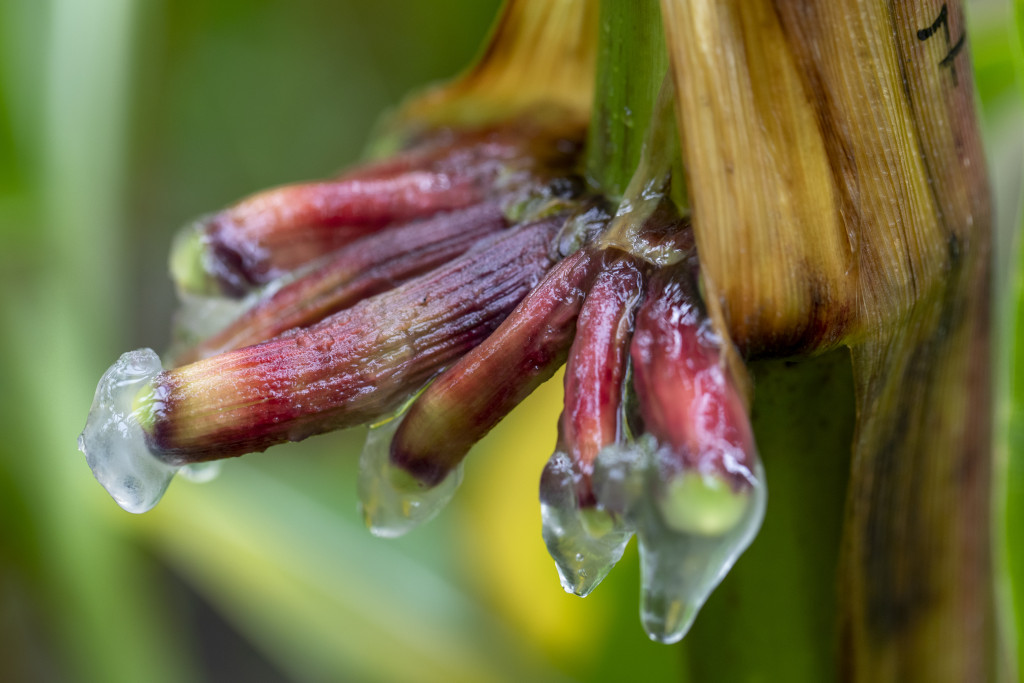
Most farmers use fertilizer on their crops to deliver proper nutrients that produce a healthy and profitable yield. Since synthetic fertilizers are typically derived from natural gas, farmers are at the mercy of the constantly fluctuating price of this finite resource.
Thanks to support from the U.S. Department of Energy, the U.S. Department of Agriculture and the National Science Foundation, researchers at University of Wisconsin–Madison are engineering beneficial bacteria and breeding more-resilient crops with the aim to minimize farmers’ reliance on synthetic fertilizers, increase their cost savings and help protect the environment.
Jean-Michel Ané, a professor of bacteriology, plant and agroecosystem sciences in the College of Agricultural and Life Sciences, uses field sites at the university’s Hancock and Arlington Agricultural Research Stations to run experiments and share new findings with growers across the state. His goal is to help them improve their efficiency without sacrificing yield.
We recently spoke with Ané about these projects and how halts to federal funding threaten the continuation of important agricultural research.
What kind of crops does your lab work with?
We work to make cereal and legume crops like corn, sorghum and soybeans more effective and resilient to environmental stressors like heat, drought and salinity. We do that by studying the associations between crops and beneficial microbes, like bacteria or fungi, so we can strengthen those symbiotic associations. These beneficial microbes, which we sometimes call biofertilizers, can provide nutrients and water for crops.
How do you strengthen the associations between crops and these microbes?
For cereal crops, one of these approaches is basically to engineer bacteria that do a process called nitrogen fixation, which is drawing nitrogen from the air into the soil for plants. That work is in collaboration with companies such as Pivot Bio. On the plant side, we can breed corn and sorghum plants to develop germplasms that better support these nitrogen-fixing bacteria.
For legumes such as soybeans and alfalfa, some of these beneficial bacteria associations already exist and work very well, except under stress. I’m trying to understand how stressors like heat, drought and salinity could affect the relationship between legumes and nitrogen-fixing bacteria and improve the crops’ resilience.
How does minimizing the use of synthetic fertilizers help farmers and all Wisconsinites?
Currently, the way to produce synthetic fertilizers is using natural gas. When they’re applied to fields of crops, any excess amount of nitrogen not used by the plants can lead to nitrogen leaching and contamination of ground water. This is especially a concern in southern Wisconsin. If they don’t escape through nitrogen leaching, these same fertilizers are converted into greenhouse gasses like nitrous oxide and contribute to global warming. The bacteria technology we developed would mean farmers don’t have to use as much synthetic fertilizer and we can reduce nitrogen leaching and greenhouse gas emissions.
How does funding uncertainty influence your ability to continue this work?
This year, I took a huge risk running my field and lab experiments. Our funding is currently being held and may or may not come through, so I have dipped into our lab’s funding reserves. I did this to continue to support the progress of the project and the students I am training. I also did it because even if the funds don’t go through, the material that we developed would already be useful for developing countries. So, if I need to stop everything here, I may not have new technologies for U.S. growers, but at least at the end of this year I have something to give to my colleagues in Asia and Africa who are interested in testing these technologies for small holder farmers.
Does funding uncertainty affect the students in your lab?
Typically, in my lab, there are about 10 undergraduate students every semester. But given that I’m not sure which graduate and postdoctoral students will have funded projects, there is uncertainty on which mentors will be in my lab in the fall. I don’t feel comfortable offering undergraduate internships if I’m not sure that mentors will be in the lab.
It makes me sad for them because they are losing an opportunity to do research, and for some of them, it’s their first research experience. It’s often an opportunity for me to show students that they can do exciting research on things other than humans. That’s the most common comment I get from an undergraduate student after a semester or two in my lab: “Oh, I had no idea you could do cool research on crops and microbes!” Many of them have not thought about plant biology, agronomy and crop science but after an internship in my lab, they have broadened their horizons and can see themselves continuing in this path.
This story was originally published by University of Wisconsin–Madison.